Samsung QE65QN95B Review
Samsung's new flagship 4K TV is a mini LED masterpiece.
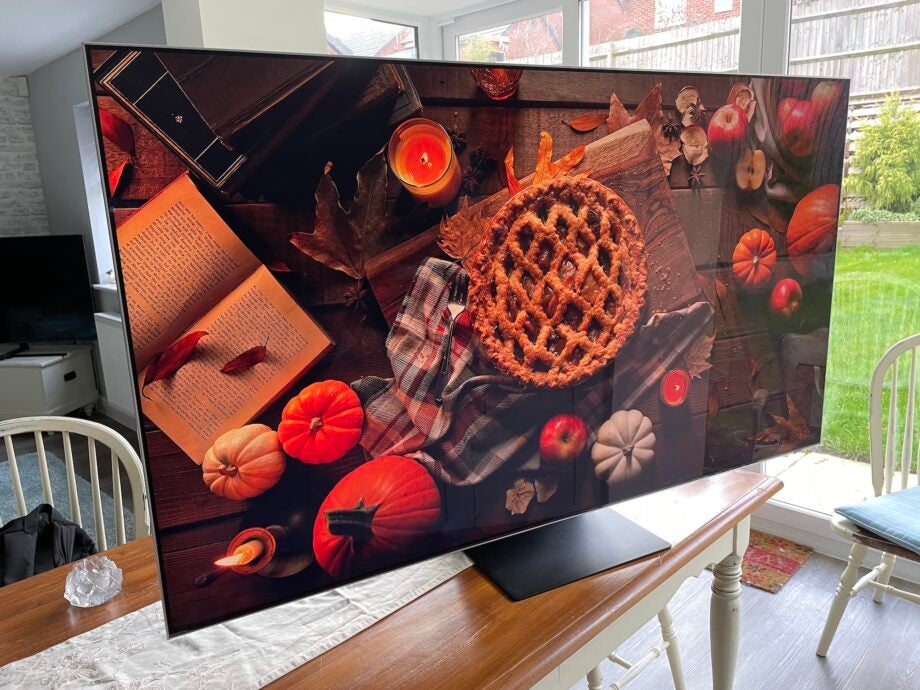

Verdict
While the QE65QN95B’s picture quality charms don’t come cheap, they underline emphatically the potential Mini LED technology has to take LCD TVs to a whole other level – for gamers and movie fans alike.
Pros
- Spectacular picture quality
- Comprehensive gaming features
- Minimalistic Infinity design
Cons
- New smart system isn’t helpful at all
- No Dolby Vision support
- Blooming issues from wide viewing angles
Key Features
- 65-inch 4K LCD TVThe 65-inch screen holds a native pixel count of 3840 x 2160
- HDR10, HLG and HDR10+ HDR supportHDR10 is the industry standard, HLG is the most widely used for live broadcasts, and HDR10+ adds extra scene by scene image data for use by HDR10+-capable TVs.
- New Tizen smart interfacePowered by Samsung’s own Tizen smart platform, the 65QN95B’s interface switches to a full screen approach with far more direct content links
- Comprehensive gaming supportCan play games at 4K/120Hz, in variable refresh rates, and supports automatic low latency mode switching across all four HDMI ports.
- Mini LED lightingThe 65QN95B uses LEDs just one fortieth the size of normal TV LEDs to provide much finer light control for its pictures.
Introduction
With 2022 looking set to deliver a feast of cutting edge, ultra high quality TVs from a range of different manufacturers, Samsung really needed to hit the ground running with its first 2022 TV offering.
Happily its 65-inch 4K flagship QE65QN95B does just that – with gloriously bright, colourful knobs on.
Availability
- UKRRP: £3499
- USATBC
- EuropeRRP: €3499
- CanadaTBC
- AustraliaTBC
There’s no hiding the fact that at £3,499 in the UK, the QE65QN95B is far from cheap. It’s significantly more expensive than LGs £2,699 2022 OLED65C2, for instance.
However, it’s pretty much on a level with LG’s flagship OLED65G2 OLED TV, so given the QE65QN95B is Samsung’s flagship LCD TV, I guess the price holds up. Provided, at least, it has the performance chops to seriously challenge its OLED rival.
When it comes to other territories beyond Europe (where it’s €3499), Samsung is notorious for applying different specifications to the same model numbers in different regions, and hadn’t announced pricing at the time of review.
Design
- Bezel-free Infinity frame
- Flat front, flat back
- Connections provided on an external box
Samsung has refined its Infinity design concept for the QE65QN95B, keeping the almost invisible screen bezel but reducing the depth of its rear compared with last year’s QN95A predecessor.
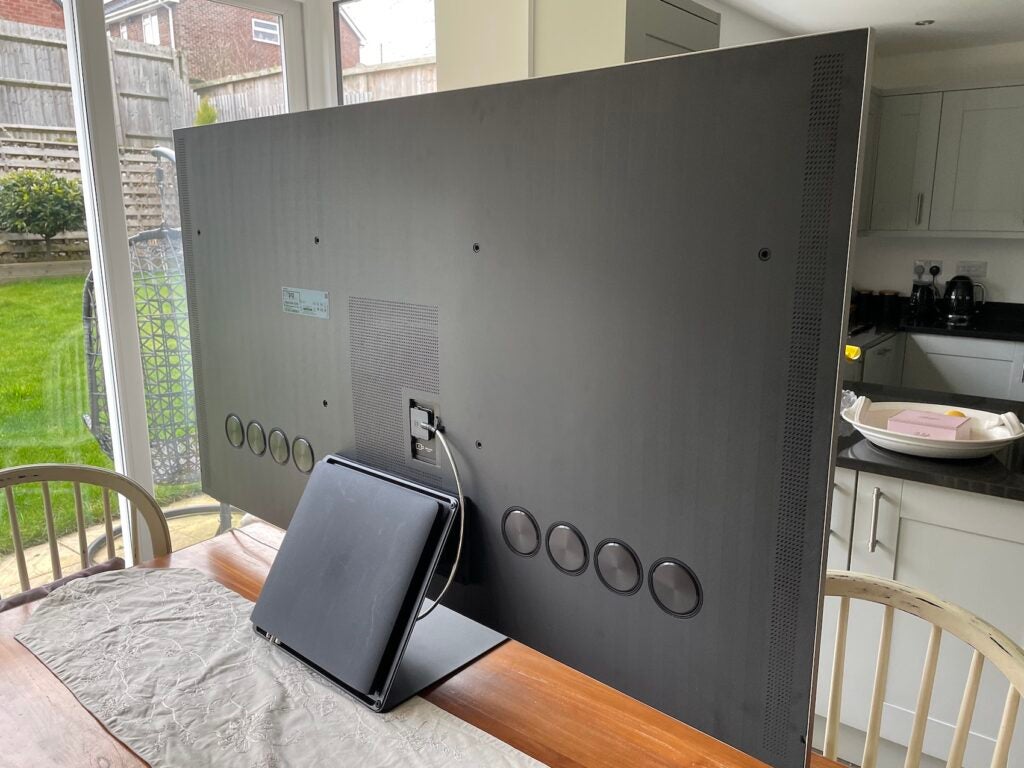
The rear depth is still greater than you typically get with the outer edges of OLED TVs, but the QE65QN95B’s depth remains uniform from corner to corner, rather than there being any unsightly bulgy bits anywhere.
The screen’s flat-on-both-sides design makes it a good wall hanging option, though it actually ships with a heavy duty metal desktop stand. This supports the TV stably despite being centrally mounted and narrow enough to sit on even fairly small pieces of furniture.
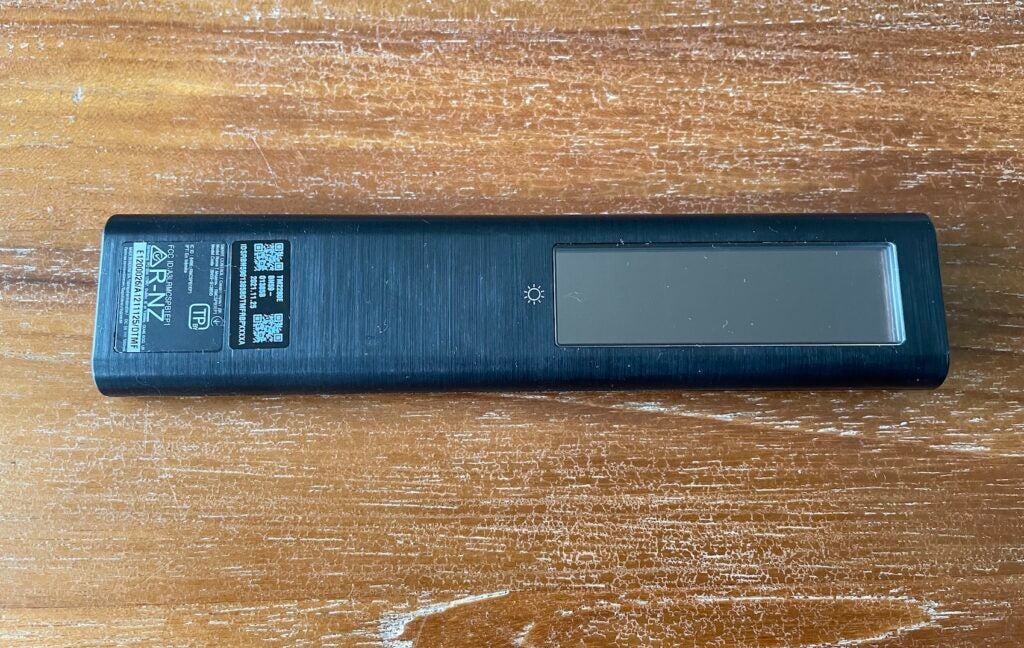
The QE65QN95B ships with two remote controls and an external One Connect box. One of the remotes is a fairly typical, button-packed affair, while the other is a ‘smart’ option that strips the button count back for more streamlined day-to-day use. Also, in a move that will dismay Duracell, the smart remote sports a solar panel for power.
The One Connect box has been trimmed down considerably compared with 2021’s meaty item, making it easier to put in a kit rack or on a nearby side-board or shelf. It connects to the TV using just a single silvery cable that carries power as well as picture and sound, and as with last year’s QN95A, it can slot tidily onto the back of the TV’s angled desktop stand neck if you prefer.
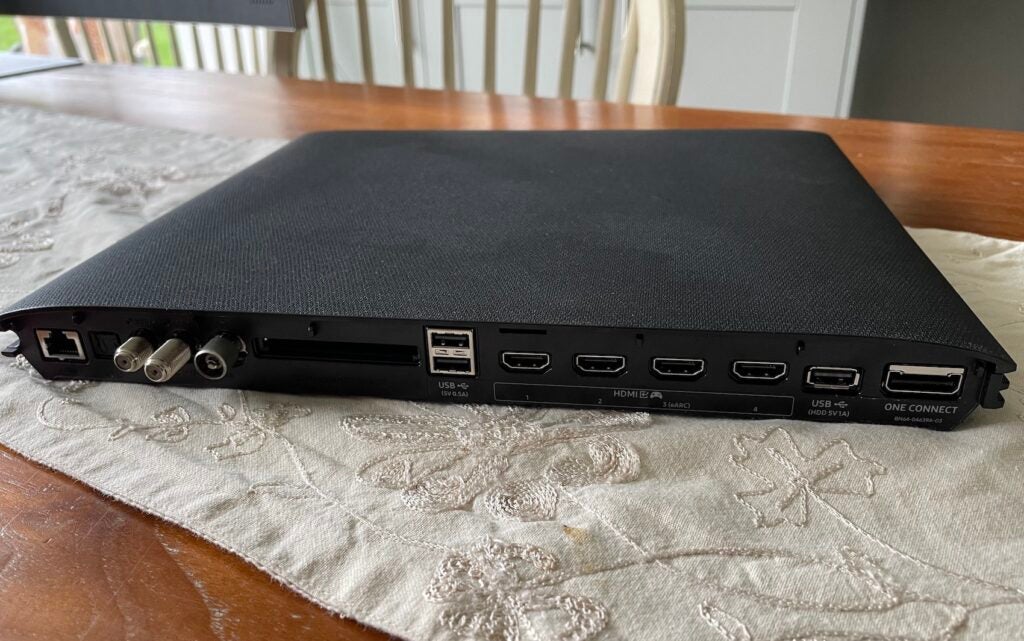
Features
- Native 4K LCD TV
- Direct lit mini LED screen with local dimming
- HDR10, HLG and HDR10+ HDR support
The QE65QN95B’s star turn is its use of Mini LED lighting. This involves removing the lenses and packaging from the LEDs used in regular LED TVs, reducing them to around a fortieth of their previous size. This makes it possible to fit far more of them into the same screen area, opening the door to much finer levels of light control.
As with Samsung’s 2021 Mini LED debutante, the QN95A, the QE65QN95B backs its Mini LED lighting up with serious amounts of local dimming. In fact, you get 720 separately controlled lighting zones all told – which amounts to hundreds more than we’re accustomed to getting with regular LED TVs.
The 720 dimming zone count is, though, only the same as that provided for 2021’s 65QN95A when I’d kind of expected/hoped that Samsung might increase the number for mini LED’s second flagship outing. Any disappointment over this is short-lived, though, thanks to a new feature called Shape Adaptive Light Control.
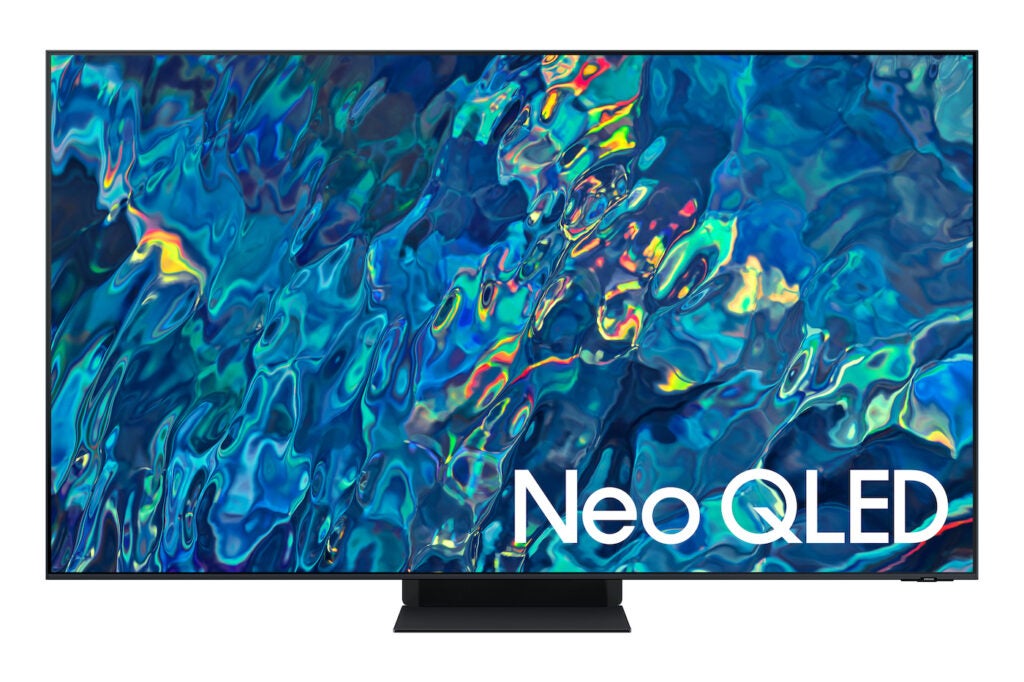
This allows separate dimming zones to, basically, adjust the width of their light. So the edge of a zone can look dimmer than the middle if it needs to, to help it blend better into a dark neighbouring zone, without potentially bright parts of the same zone having to compromise their brightness to counter dimming as much as they would have done before.
This should keep a lid on the thorny issue of backlight ‘blooming’ around bright objects that tends to be an issue with locally dimmed LED TVs.
Samsung has upped the processing power it throws at the QE65QN95B’s pictures, too. So much so that while the panel at its heart remains 10-bit (no 12-bit panels have been released so far), the processing power applied to video signals is upped from 12-bit to 14-bit. This should lead to smoother colour gradations and better greyscale reproduction.
The QE65QN95B’s processing also boasts another step up from Samsung’s AI processing system. The image analysis system now benefits from the combined input of as many as 20 neural networks, enabling it to make ever more accurate assessments of the type of content it’s dealing with in real time.
One other new feature of the QE65QN95B is its Auto Calibration system. This lets you do a strikingly accurate calibration of the QE65QN95B’s pictures using your mobile phone camera, Samsung’s Auto Calibration app, and some test signals built into the TV. Professional calibrations may still get you even more accurate results if you’re willing to pay hundreds of pounds for the privilege, but my impression is that the Auto Calibration system does a ridiculously effective job for something that’s essentially free.
Turning to the QE65QN95B’s sound, the big news is that Samsung has finally adopted built-in Dolby Atmos. This joins the latest refinement of Samsung’s Object Tracking Sound system, which places speakers all around the TV’s edges rather than just along the bottom edge to expand the soundstage as well as expressing sound mix details more precisely.
I’ve speculated for a couple of years now that OTS seemed like a potentially great match for Dolby Atmos, so hopefully the QE65QN95B lives up to my hopes. Especially as the latest OTS system incorporates up-firing drivers for the first time, along with a new Human Tracking Sound feature that detects where faces are in a picture so that their dialogue can be positioned more accurately.
Turning next to the QE65QN95B’s ever more important gaming credentials, it supports 4K/120Hz, variable refresh rates and automatic low latency mode switching through all four of its HDMI ports. Which is nice. It also carries officially credited support for AMD’s Freesync Premium Pro VRR system and uncredited support for NVidia G-Sync. The frame rate support for PC users has now expanded to a truly monitor-like 144Hz.
The screen’s input lag – the time it takes to render image data – drops to a lickity split 10.4ms in Game mode. Though Samsung now thoughtfully provides two options for trading input lag speed against smoother motion and other picture enhancements. These can work well with RPG-style games that aren’t as built around lightning fast reactions.
A handy Game Dashboard, meanwhile, can be called up when game sources are detected to give you a quick summary of the current gaming input signal being received, and quicker access to game-specific picture adjustments.
The four HDMI 2.1 ports include one that supports eARC, for passing lossless object-based sound systems through the TV to compatible soundbars and AVRs, while other connectivity includes three USBs and all the Bluetooth, AirPlay 2, and Wi-Fi options for accessing content on other devices wirelessly that you’d expect to find on a modern flagship TV.
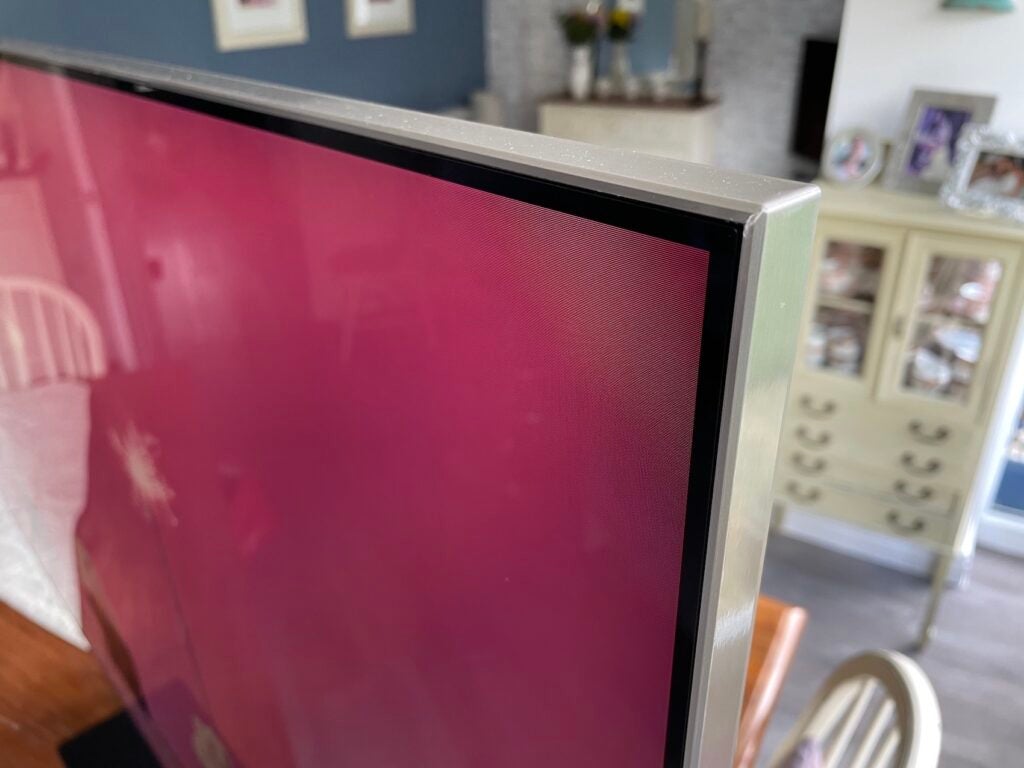
Samsung has completely revamped its Tizen smart system for 2022. The previous couple of rows of app and content icons that used to appear when you hit the remote’s Home key have been replaced by a full screen interface, and there’s a completely new arrangement of content ‘shelves’ and feature access menus to get your head around.
Unfortunately I didn’t get on with the new smart system at all. Too much of the home screen is taken up with a single box that seems to have mostly advertising and advice value rather than doing anything useful where content discovery is concerned. The lead content ‘shelves’ seem clever at first glance in the way they collect content from a huge array of sources, but it quickly becomes apparent that the main result of their approach is to collect together lots of (at best) b-list content that most people will never be interested in watching.
You also can’t customise the content shelf order to any meaningful extent; simply finding different inputs has become a bizarre chore if you’re using the smart remote; and the connections between the set up menus and the smart menus are almost bizarrely counter-intuitive at times. It basically feels like Samsung has sacrificed simplicity and focus just to bombard you with masses of content you don’t want.
Picture quality
- Spectacular brightness and colour
- Peerless contrast for an LCD TV
- Excellent gaming credentials
While the QE65QN95B’s smart system might have gone backwards, its picture quality definitely has not. The Shape Adaptive Light Control feature, in particular, has a massive impact.
First, it reduces the common local dimming backlight blooming issue (where halos of light can appear around stand-out bright elements of a picture) to practically nothing. The addition of Mini LED lighting had a profound impact on reducing blooming on last year’s QN95A range, but the 65QN95B’s new processing and light management tricks are on another level. There are times where you can honestly believe that LCD is now actually capable of competing with the self-emissive properties of OLED when it comes to local contrast.
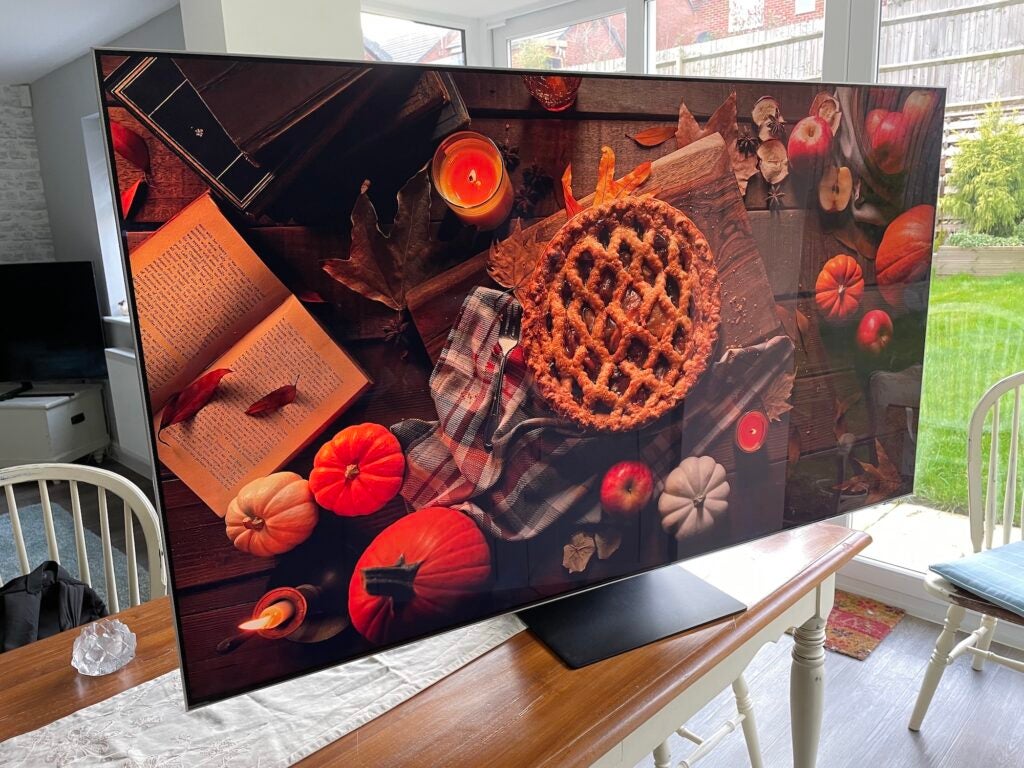
Making this feat of light control all the more exceptional is a second benefit of Shape Adaptive Light Control. The ability of the screen to present stand-out bright image elements without reducing their brightness as much (to reduce blooming) as the QN95A did.
This all results in a much less potential disturbance from panel hardware limitations than you got with the QN95A.
The image’s significantly superior consistency has been achieved, moreover, without any compromise to the spectacular brightness that’s really the main attraction of Samsung’s Neo QLED TVs. In its Dynamic picture preset the 65QN95B pumps out the best part of 2900 nits of light when asked to shows a white HDR window covering 10% of a black screen. This is pretty much three times as much peak brightness as you’ll get from any OLED TV.
The Dynamic mode isn’t really a great watch, though, thanks to its tendency to push everything to ’11’ and leave the overall picture looking unnatural. It also can only hold on to its huge peak brightness levels for very limited amounts of time.
Even the lovely looking Standard mode, though, achieves (and sustains) a massive 2,200 nits. And even more tellingly even Filmmaker Mode runs at just over 2000 nits, despite its focus on balance and accuracy over the more eye-catching attributes of the Standard preset.
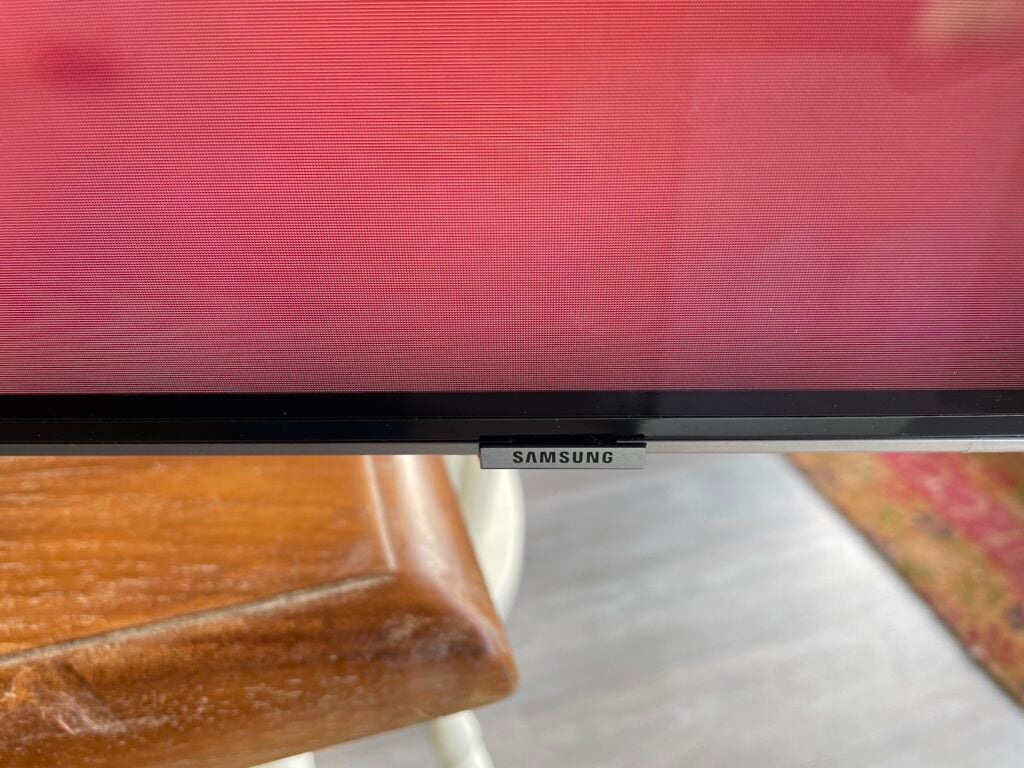
This sort of brightness, of course, makes the QE65QN95B a potentially great friend of HDR content. And so it proves, as Samsung’s set gets levels of punch and intensity out of HDR images that precious few rivals can even dream about. This is true, too, when it comes to both full-screen brightness levels, and those small, gleaming peaks of light that give an extra sheen of realism to the best HDR images.
Having so much full screen brightness while still having enough brightness to spare to push peaks so hard is something you just won’t see anywhere else in the world of TV technology.
Of course, brightness by itself doesn’t equate to good picture quality. In fact, it can actually be a problem if not backed up by other aspects of the picture. As you can probably guess by now, though, the QE65QN95B backs it up in spades.
Thanks to its Quantum Dot colour system and improved colour bit depth processing, for instance, the 65QN95B retains gorgeously fulsome colour saturations no matter how intense the brightness gets. There’s no fading away or washing out of the sort you see with displays that don’t have the colour volume support to keep their brightness company. On the contrary, the brightness just makes colours look more radiant.
Also backing up the brightness is the almost complete absence of ‘clipping’ (lost shading details) in the brightest whites and colours, and best of all, the Mini LED lighting and revamped light controls mean that while the QE65QN95B can do dazzling brightness, it can also do the deepest black levels known to the LCD TV world. In fact, black levels look OLED like at times.
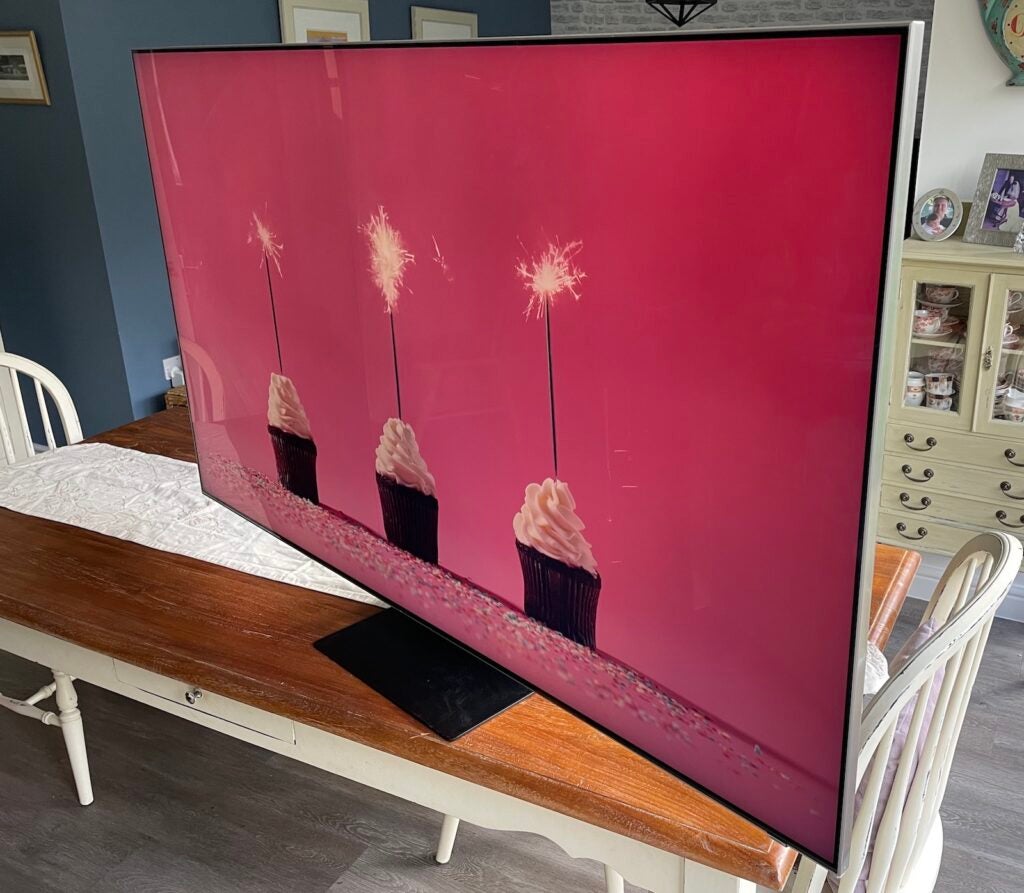
Or at least that’s the case with the Standard and Dynamic modes. The Movie and Filmmaker Modes can look a little greyer than expected in dark areas. You can improve this in Movie mode, though, by adjusting the local dimming controls.
Samsung’s improved greyscale processing and lighting control helps the QN95B reproduce much better shadow detailing in my favourite Standard preset than you got with the QN95A in the same mode. Very rarely a particularly dark shot might cause the blackest areas to appear a touch hollow, and cause a little instability in overall light levels. But such moments are much rarer than they were with the QN95A.
Having mentioned a minor niggle back there, there are a couple of others to run by you too. One is that the default motion settings in Standard mode aren’t great. They remove judder too much, leaving films suffering with the artficial-looking ‘soap opera’ effect, and they tend to cause distracting amounts of unwanted processing side effects. Either leave the motion processing off, or choose the Custom option and select very low level processing power options.
While viewing angles are good by LCD standards generally, the backlight blooming that’s so invisible straight on with the 65QN95B suddenly becomes much more noticeable when viewing from down the TV’s sides.
While the 65QN95B typically dims bright highlights against dark backdrops much less than its predecessor, dimness can still be a noticeable issue with very small details – stars, distant windows at night and so on. And finally, while the TV supports the HDR10+ ‘active’ HDR system, it doesn’t also support the rival – and more popular – Dolby Vision system.
The 65QN95B’s brilliant pictures deserve for us to finish on a high, though. So let’s do that by pointing out that its gaming performance is fantastic. Its brightness, intense colours, fast response time and slick frame rate handling all feel pretty much tailor made for getting the best out of anything the latest PCs and the consoles can come up with.
Sound quality
- Impressively precise detail placement
- Dolby Atmos decoding works well with OTS
- Eight mid-range drivers on the rear
The 65QN95B’s sound isn’t as stand-out brilliant as its picture quality – though there are certainly good things to say about it. As hoped, for instance, the Dolby Atmos decoding really does partner up well with the OTS speaker arrangement, delivering a busy, crisp, detailed presentation that seems to extend at least a little distance beyond the confines of the TV’s outer edges.
Voices always sound clean and credible and usually seem to be coming from the right part of the screen, while the striking bank of drivers ranged across the TV’s rear add decent amounts of bass without becoming overwhelmed or causing the thin chassis to rattle.
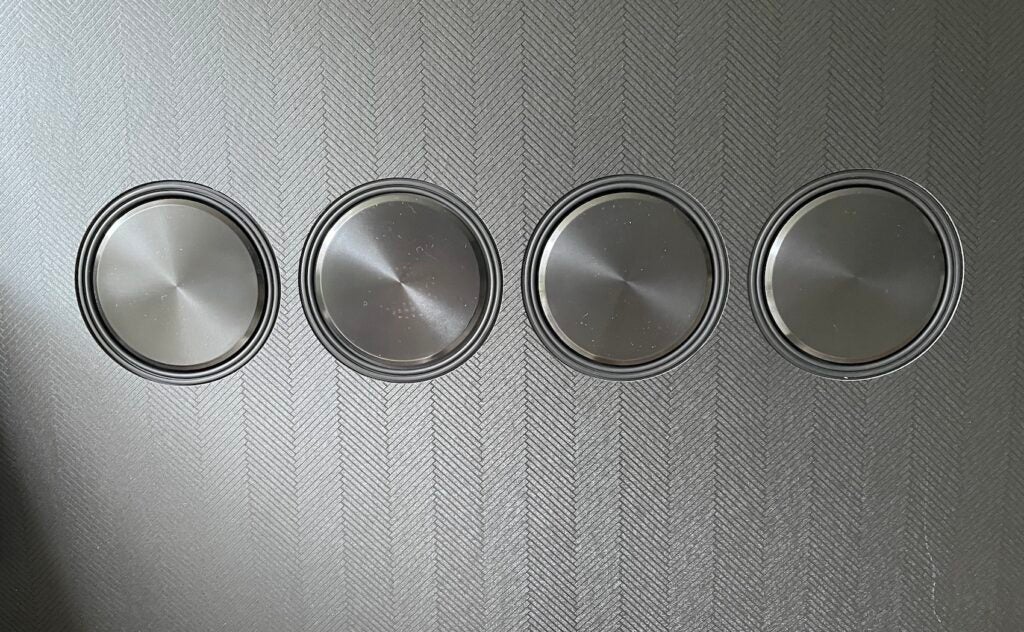
There’s a slightly hemmed in quality to the overall sound, though, that feels out of step with the spectacle and drama of the QN95B’s pictures. This also stops the TV from stepping up from ‘TV sound’ to ‘home cinema sound’ like the best sounding rivals do. It’s worth noting, though, that if you add a relatively new Samsung soundbar to your 65QN95B, the TV’s speakers can partner up with those in the soundbar surprisingly effectively.
Latest deals
Should you buy it?
You want the punchiest HDR performance in town Thanks to its mix of Mini LED lighting and Quantum Dot colours, the 65QN95B can deliver levels of brightness and colour the vast majority of rivals can only dream about.
You want an easy user experience. Samsung’s revamped Tizen smart system is a misfire, making it harder rather than easier to home in on content you really want.
Final Thoughts
The Samsung QE65QN95B crushes any notion that last year’s first Samsung Mini LED TVs were so good that there might not be much room for improvement. The new processing and light management applied to the QN95B’s Mini LED engine delivers a whole new level of picture precision and consistency, without taking away any of the brightness and dynamism that LED TVs are renowned for.
The results are pictures that raise the bar once again, and get 2022’s TV world off to an even better start than we’d expected.
How we test
We test every televisions we review thoroughly over an extended period of time. We use industry standard tests to compare features properly. We’ll always tell you what we find. We never, ever, accept money to review a product.
Find out more about how we test in our ethics policy.
Tested for more than a week
Tested with real world use
Tested using industry calibrated tools and discs
FAQs
No, Samsung continues to avoid Dolby Vision HDR with its TVs, supporting HDR10+ instead, along with HDR10 and HLG.
Samsung’s 2022 Neo QLED range is currently available to pre-order, with deliveries scheduled to happen from April 21st, 2022 onwards. You also get a free pair of Galaxy Buds Live earphones if you pre-order.







